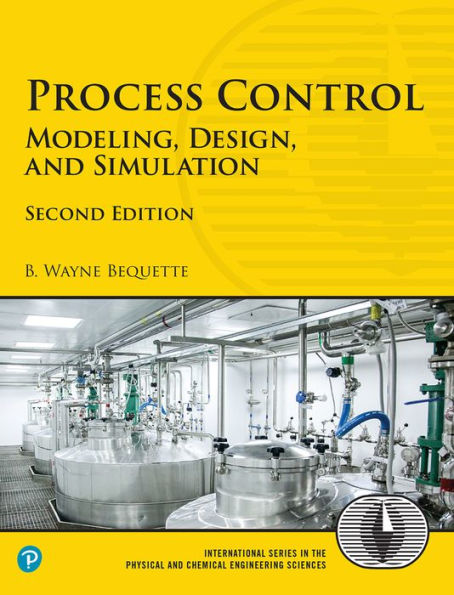Master process control hands on, through practical examples and MATLAB simulations.
- Learn process control hands-on, using MATLAB simulations
- Process control diagrams, dynamic modeling, feedback control, control loop tuning, and more
- Includes extensive examples drawn from biomedical applications
- Presents start-to-finish chemical process control case studies
This is the first complete introduction to process control that fully integrates software tools-enabling professionals and students to master critical techniques hands on, through computer simulations based on the popular MATLAB environment. Process Control: Modeling, Design, and Simulation teaches the field's most important techniques, behaviors, and control problems through practical examples, supplemented by extensive exercises—with detailed derivations, relevant software files, and additional techniques available on a companion Web site. Coverage includes:
- Fundamentals of process control and instrumentation, including objectives, variables, and block diagrams
- Methodologies for developing dynamic models of chemical processes
- Dynamic behavior of linear systems: state space models, transfer function-based models, and more
- Feedback control, proportional, integral, and derivative (PID ) controllers, and closed-loop stability analysis
- Frequency response analysis techniques for evaluating the robustness of control systems
- Improving control loop performance: internal model control (IMC), automatic tuning, gain scheduling, and enhancements to improve disturbance rejection
- Split-range, selective and override strategies for switching amongst inputs or outputs
- Control loop interactions and multivariable controllers
- An introduction to model predictive control (MPC)
Bequette walks step by step through the development of control instrumentation diagrams for an entire chemical process, reviewing common control strategies for individual unit operations, then discussing strategies for integrated systems. The book also includes 16 learning modules demonstrating how to use MATLAB and SIMULINK to solve several key control problems, ranging from robustness analyses to biochemical reactors, biomedical problems to multivariable control.
Master process control hands on, through practical examples and MATLAB simulations.
- Learn process control hands-on, using MATLAB simulations
- Process control diagrams, dynamic modeling, feedback control, control loop tuning, and more
- Includes extensive examples drawn from biomedical applications
- Presents start-to-finish chemical process control case studies
This is the first complete introduction to process control that fully integrates software tools-enabling professionals and students to master critical techniques hands on, through computer simulations based on the popular MATLAB environment. Process Control: Modeling, Design, and Simulation teaches the field's most important techniques, behaviors, and control problems through practical examples, supplemented by extensive exercises—with detailed derivations, relevant software files, and additional techniques available on a companion Web site. Coverage includes:
- Fundamentals of process control and instrumentation, including objectives, variables, and block diagrams
- Methodologies for developing dynamic models of chemical processes
- Dynamic behavior of linear systems: state space models, transfer function-based models, and more
- Feedback control, proportional, integral, and derivative (PID ) controllers, and closed-loop stability analysis
- Frequency response analysis techniques for evaluating the robustness of control systems
- Improving control loop performance: internal model control (IMC), automatic tuning, gain scheduling, and enhancements to improve disturbance rejection
- Split-range, selective and override strategies for switching amongst inputs or outputs
- Control loop interactions and multivariable controllers
- An introduction to model predictive control (MPC)
Bequette walks step by step through the development of control instrumentation diagrams for an entire chemical process, reviewing common control strategies for individual unit operations, then discussing strategies for integrated systems. The book also includes 16 learning modules demonstrating how to use MATLAB and SIMULINK to solve several key control problems, ranging from robustness analyses to biochemical reactors, biomedical problems to multivariable control.

Process Control: Modeling, Design, and Simulation
768
Process Control: Modeling, Design, and Simulation
768Related collections and offers

Product Details
| ISBN-13: | 9780134033839 |
|---|---|
| Publisher: | Pearson Education |
| Publication date: | 07/24/2023 |
| Series: | International Series in the Physical and Chemical Engineering Sciences |
| Sold by: | Barnes & Noble |
| Format: | eBook |
| Pages: | 768 |
| File size: | 56 MB |
| Note: | This product may take a few minutes to download. |
| Age Range: | 18 Years |
